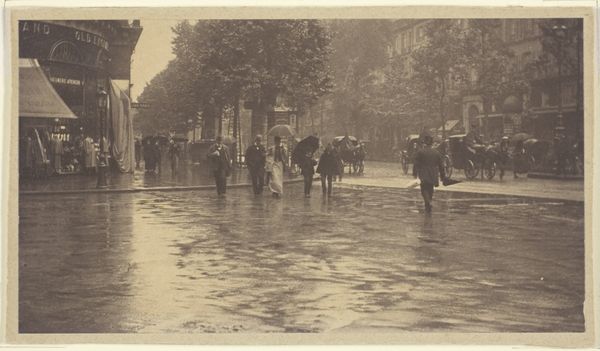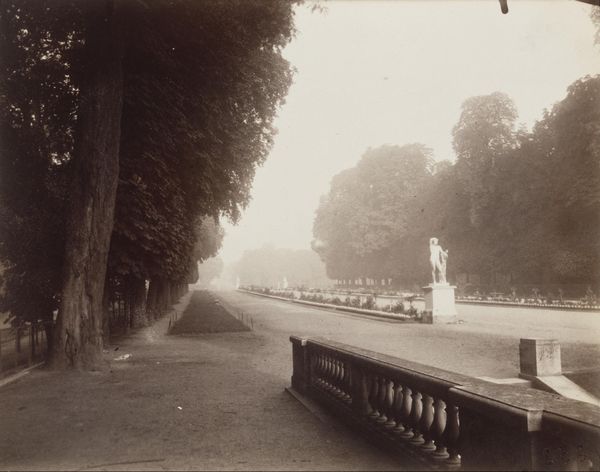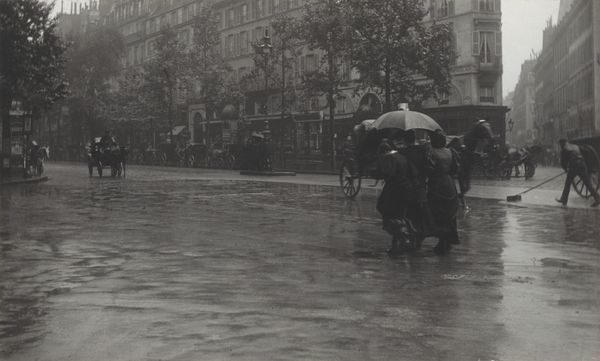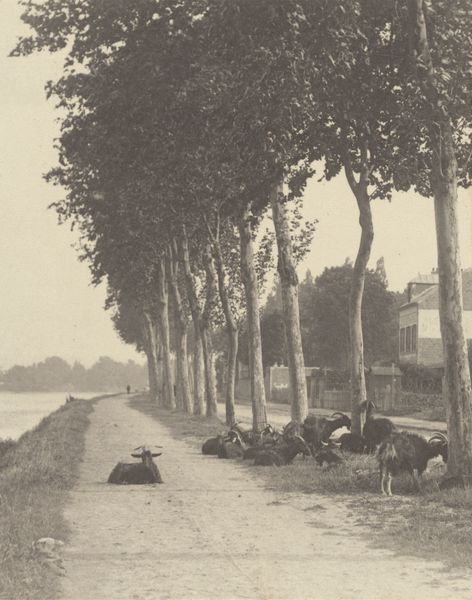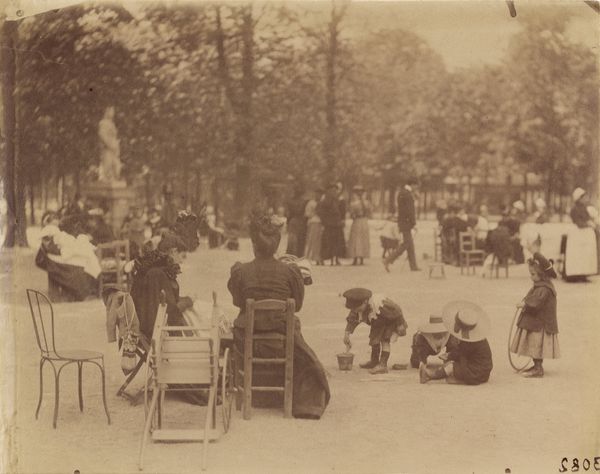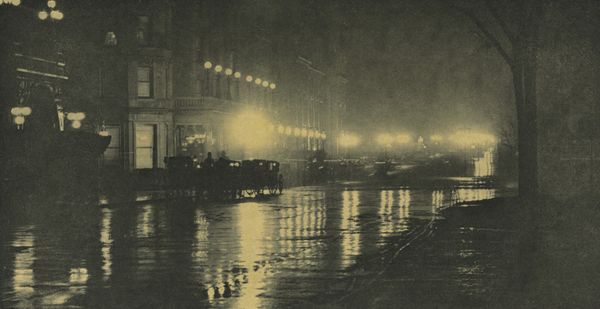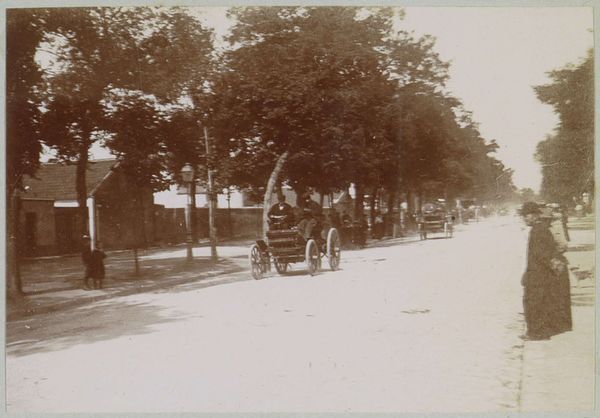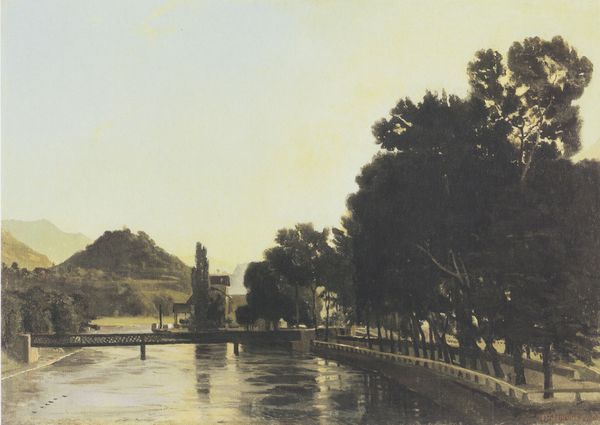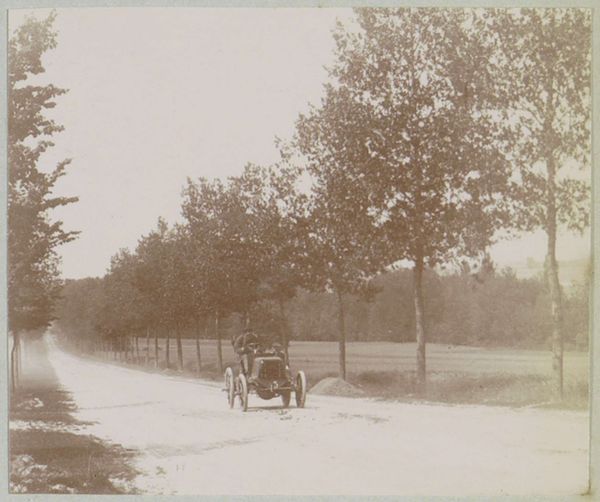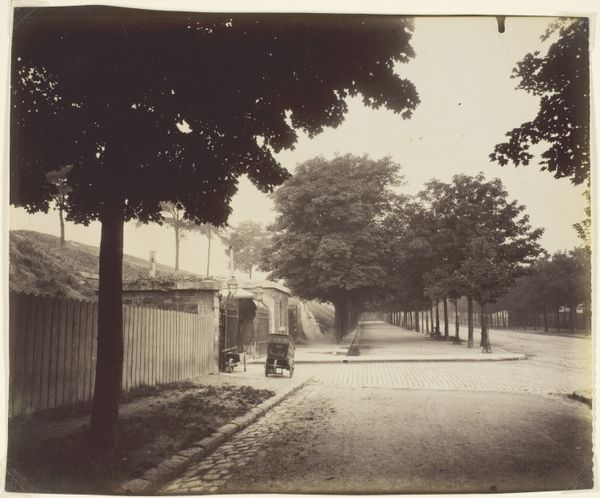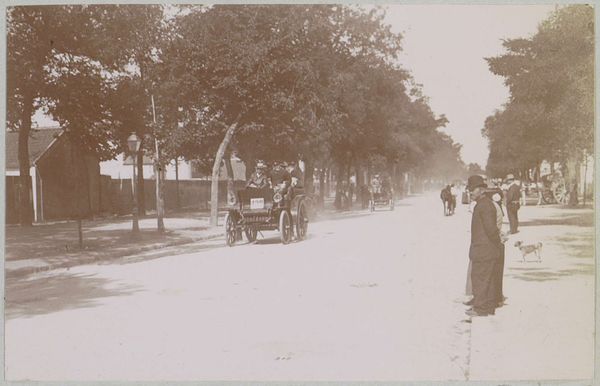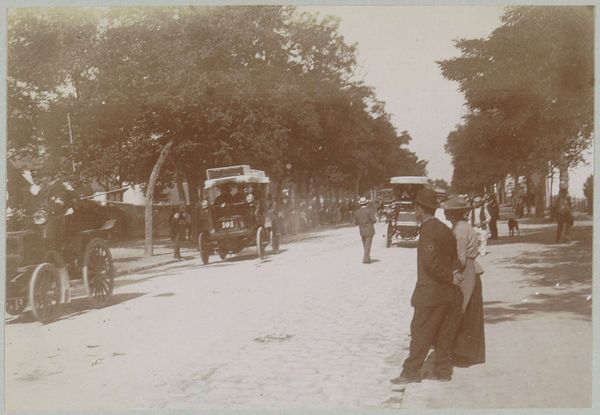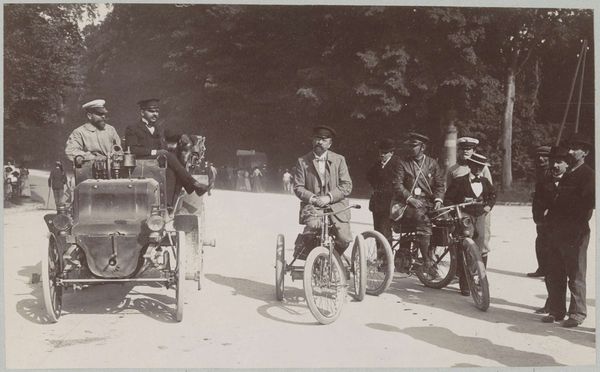![A Snapshot; Paris [street scene] by Alfred Stieglitz](/_next/image?url=https%3A%2F%2Fd2w8kbdekdi1gv.cloudfront.net%2FeyJidWNrZXQiOiAiYXJ0ZXJhLWltYWdlcy1idWNrZXQiLCAia2V5IjogImFydHdvcmtzLzFmNGVmZTQ3LTA5YjYtNGIzMi1hMTI1LTg5NTFjYmE1MmI2YS8xZjRlZmU0Ny0wOWI2LTRiMzItYTEyNS04OTUxY2JhNTJiNmFfZnVsbC5qcGciLCAiZWRpdHMiOiB7InJlc2l6ZSI6IHsid2lkdGgiOiAxOTIwLCAiaGVpZ2h0IjogMTkyMCwgImZpdCI6ICJpbnNpZGUifX19&w=3840&q=75)
#
film photography
#
black and white photography
# print
#
light coloured
#
warm monochrome
#
archive photography
#
monochrome photography
#
outdoor activity
#
film
#
celebration photography
#
shadow overcast
Dimensions: image: 13.7 × 17.4 cm (5 3/8 × 6 7/8 in.)
Copyright: National Gallery of Art: CC0 1.0
Curator: What strikes you most when you first look at this image? Editor: Immediately, I’m drawn to the texture. It feels almost palpable – the slickness of the wet street, the rougher clothes of the pedestrians, all captured in this grainy, almost blurry fashion. Curator: That texture is wonderfully conveyed, and I would say this photograph is called "A Snapshot; Paris [street scene]" by Alfred Stieglitz, created sometime between 1911 and 1913. It really encapsulates the gritty reality of urban life during that era. Editor: Gritty is the right word! You can almost feel the dampness seeping into your clothes. It's interesting how he captured the figures, too. Their clothing speaks of a certain class divide, doesn't it? And, of course, that processing that emphasizes that soft but rich materiality that brings us into the subject. Curator: Absolutely. Stieglitz, through his lens, documented the social strata of Paris. Notice how the individuals on the bridge are dressed more elaborately than the figures below. It is more than just about what they are wearing. It is about the labor of crafting, sourcing the materials, how the image represents and elevates their wearers. Editor: And he does it without being overtly political. It's more of a social observation through materiality and access. The contrast between the heavy clothing and light coloured film highlights the practicality against that backdrop. It also points to Stieglitz's choices in showcasing this particular urban scene, which speaks to the accessibility and even the challenges of documenting such diversity in urban life. Curator: I concur entirely. His focus was not merely on aesthetics, but on capturing the essence of society through its daily interactions. Stieglitz saw the camera as a tool to reveal hidden social dynamics, to reflect the tensions inherent in modern urban life. It gives insight to social and power structures. Editor: Well, I walked into this thinking only about the visual experience and its gritty feel, and I now think that this challenges the artifice with the material. It really provides much to discuss, doesn't it? Curator: It truly does, yes. It highlights not just the reality of a moment, but the societal narratives embedded within.
Comments
No comments
Be the first to comment and join the conversation on the ultimate creative platform.
